DANIEL E. CASSIDY
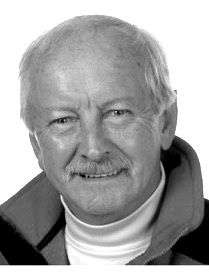 WINSLOW – Daniel Edward Cassidy Jr, 83, passed away on February 29, 2024, surrounded by his loved ones. Dan was born in Portland, Maine on June 28, 1940, to Daniel E. and Odell (Thibodeau) Cassidy. In 1946 the family moved to Winslow to open Cassidy’s Market on Augusta Road.
WINSLOW – Daniel Edward Cassidy Jr, 83, passed away on February 29, 2024, surrounded by his loved ones. Dan was born in Portland, Maine on June 28, 1940, to Daniel E. and Odell (Thibodeau) Cassidy. In 1946 the family moved to Winslow to open Cassidy’s Market on Augusta Road.
Dan graduated from Winslow High School in 1960. An avid music lover, Dan was an accomplished violin player and played the timpani and snare drums for the high school and traveling bands. He performed all over Maine, sitting as second chair for the violin with the Maine State Orchestra. He enjoyed many of those band trips, including travels to New York City and Nova Scotia, with his future wife, Jean. After graduating, Dan joined the Air Force Reserves, completing his basic training at Lackland Air Force in Texas and was stationed at Dow Air Force Base in Bangor.
Dan began his 33-year-long career at the Central Maine Morning Sentinel in 1966, working his way up from the composing room, to selling advertising, to the co-op and special sections’ manager, and then ended his career as the sales manager at the newspaper. His second “job” was a labor of love. For over half a century he was at the wheel of a school bus driving junior and high school ski clubs to area mountains, sports teams to meets, races, and games. In what little spare time he had, he also volunteered for the Winslow Fire Department.
An ardent outdoorsman, Dan relished and loved Maine. He indulged his love of the outdoors at the Cassidy farm in Bingham, snowmobiling with his brother Francis and nephews, sledding down Mahoney Hill, taking a dip in the deep hole, fishing, hiking, and mowing acres and acres of land. Dan’s greatest passion was skiing, taking to the slopes across the United States, Canada, and five countries in Europe, tackling over 120 mountains. Ensuring he would always have ski buddies, he had his three children and two grandchildren on skis all by the age of two, passing the joy of skiing along to them. Following his retirement, he found a way to turn that love of nature into a third “job” and wrote articles for four publications (Including INside the OUTside, for The Town Line newspaper). While his column, Ski Tracks focused mostly on skiing, he also wrote about camping, hiking, and biking. He was a member of several writer organizations including the Eastern Ski Writers and the North American Snowsports Journalists Association. He was an active member of the Carrabassett Valley Outdoor Association, and he also served as President of the Ski Museum of Maine. He was a proud Sugarloafer since 1962. To say the man lived to ski would be an understatement.
The ultimate family man, Dan always looked forward to friends and family gatherings. He enjoyed many holidays, parties, and travels including annual 4th of July vacations to Cape Cod with close family friends, reunions with family in Lake Tahoe, tours of Europe with extended family, and trips to Gorham to support his grandchildren with their achievements. His retirement also allowed him to fulfill his love of travel when Dan and Jean jumped in the Jeep and toured the country. Dan very much enjoyed and treasured these adventures and we certainly have the photographs to prove it!!
Dan was predeceased by his parents, Daniel E. and Odell, his brothers Lionel and Francis, and his sister Agnes. He is survived by his loving wife of 61 years Jean (Mathieu), his son Sean and his partner Gerry Logue, daughter Kathleen and her partner Beth Alsberg, and daughter Erin and her partner Jonathan Shardlow, his two grandchildren, Andrew and Courtney Rent, as well as several brothers and sisters-in-law, nieces and nephews, and of course, Kitty.
A Mass of Christian burial will be celebrated on Tuesday, March 12, at 10 a.m., at St. John the Baptist Church, 26 Monument street, Winslow. A memorial service at the gravesite for family and friends will be held at a later date in the summer.
Arrangements are under the care of Gallant Funeral Home, 10 Elm Street, Waterville. An online guestbook may be signed, condolences and memories shared at www.gallantfh.com.
In lieu of flowers, contributions may be made to the WinterKids of Maine at WinterKids Education Foundation, 506 Main Street, Suite 10, Westbrook, ME 04092, and/or Compassus Hospice at 163 US Route 1, Scarborough, ME 04074.
CARLENE ROY
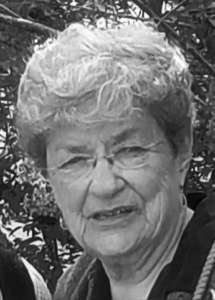 CHINA – Carlene Roy, 86, passed away on Thursday, February 8, 2024, peacefully in her sleep. She was born in Caribou on February 2, 1938, to her parents Ulysses and Lena (Santere) Lagasse.
CHINA – Carlene Roy, 86, passed away on Thursday, February 8, 2024, peacefully in her sleep. She was born in Caribou on February 2, 1938, to her parents Ulysses and Lena (Santere) Lagasse.
She was educated in the Skowhegan school district and went on to work in the shoe and textile industry for 20 years. After that, she worked as a bank teller for 20 more years before retiring.
Carlene was an excellent seamstress, quilter, needle pointer, and knitter. She was always a good cook and was particularly good at making pies. She loved to travel, go camping, and gather with friends and family.
She was predeceased by her parents, her daughter, Debra Pomelow, her brother and his spouse Roland and Bunny Lagasse, sister and spouse, Francis and Fred Pottle, and sister-in-law and spouse, Jackie and Richard Bouffard.
She is survived by her husband of 54 years, Lucien Roy; her daughter, Lisa Guilbert; stepdaughter, Kim Roy; son-in-law, Rick Pomelow; grandchildren Shame Pomelow, Angie Nelson, and Lauren Guilbert; great-grandchildren, Jacob, Matte, and Alecia; her great-great-grandchild, Alexis; as well as all her nieces and nephews.
A graveside service will be held in the spring at the Holy Family Cemetery, on the Townsend Road, in Augusta. It will be followed by a gathering of family and friends.
Arrangements are under the direction and care of Aable Cremation Service, Waterville.
WILLIAM BELL
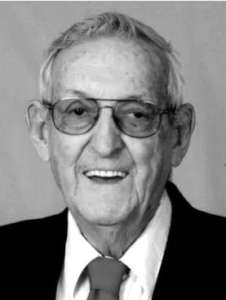 BENTON – William “Billy” Bell, 93, passed quietly into heaven on Sunday, February 18, 2024. He was born in Fairfield on July 11, 1930.
BENTON – William “Billy” Bell, 93, passed quietly into heaven on Sunday, February 18, 2024. He was born in Fairfield on July 11, 1930.
He first worked for Arthur Brown, in Benton, on the farm and then driving trucks, tractors, and equipment. He then worked for Warren Brothers, which became Tilcon. During the winter he drove oil truck for Peters Fuel Service, in Fairfield, delivering oil.
Billy retired in 1983 after an accident caused him to lose the full use of his left arm.
In his early years, for leisure, he enjoyed roller skating at the Winslow Roller Rink. After retiring, he spent his winters in Florida with his wife, Euleta, and many local friends from the area.
He is survived by his son, Rusty and wife Selena; his granddaughters Sadie Trask and her husband Matt, Betsy Nielsen and her husband Matt, Molly Bell and her companion Dan Armiger; as well as two great-granddaughters, Payton and Rylie Trask.
During the last years of his life, he enjoyed the company of his friend, Lynn Ware, they went for long rides and enjoyed watching Wheel of Fortune and Jeopardy together.
He was predeceased by his wife of 43 years, Euleta K. Bell; his parents; his sister, Mary Bell, and brother, Murchie Bell.
There will be a graveside service in the spring.
Arrangements are in the care of Lawry Brothers Funeral Home, 107 Main St., Fairfield where memories may be shared, and an online register book signed by visiting http://www.lawrybrothers.com.
As a thank you for the excellent care Bill received, the family is asking that donations in Bill’s name be sent to Gentiva Hospice, 24 Stone St. #106, Augusta, ME 04330.
EDWARD E. COUTURE
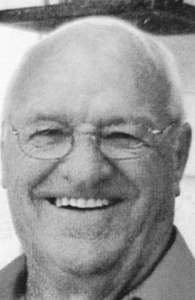 WATERVILLE – Edward “Ed” Edmond Couture, 93, of Waterville, died peacefully at his home on Monday, February 19, 2024. Ed was born on July 15, 1930, in St. Cecile, Québec, Canada. Ed is the oldest of two children to the late Wilfred and Roseanne (Bolduc) Couture.
WATERVILLE – Edward “Ed” Edmond Couture, 93, of Waterville, died peacefully at his home on Monday, February 19, 2024. Ed was born on July 15, 1930, in St. Cecile, Québec, Canada. Ed is the oldest of two children to the late Wilfred and Roseanne (Bolduc) Couture.
Ed married Cecile Bernadette Roy Couture in 1955 and they were married for 61 years before her death in 2016. After they married, Ed moved his family to the United States in 1957 and settled in Winslow. Ed had many jobs throughout his career but had been employed by the Town of Winslow for 35 years before his retirement in 1995.
Ed enjoyed playing cards with his wife and friends as well as camping. For 27 years, after his retirement, Ed and Cecile wintered in St Petersburg, Flaorida, and returned home to Maine in the spring and summer. Ed was a man of many skills. He was resourceful and could fix anything mechanical.
Ed leaves behind three daughters, Joanne and her husband Dana Jordan, of Vassalboro, Lisa and her husband Dave Hauser, of Casco, Sylvia and her husband Claude Hallee, of Waterville, and a son, Peter Couture, and his wife Shelly, of Augusta; five grandchildren, Christopher and wife Nicole Couture, of Turner, Nicholas and wife Lacey Couture, of Vassalboro, Ryan and Renee Hallee, both of Waterville, and Tim Cusick Jr., of Augusta; as well as eight great-grandchildren.
Ed will be cremated, and a graveside service will be held on Friday, June 7, at 1 p.m., where his ashes will be laid to rest with his wife at St. Francis Catholic Cemetery, 78 Grove St., Waterville.
Arrangements are under the direction and care of Aable Cremation Service, Waterville.
In memory of Ed’s wife and her battle with ALS, the family requests, in lieu of flowers, please make a contribution to the ALS Foundation, 10 Ferry St., Suite 309, Concord, NH 03301.
DARYN C. DYER
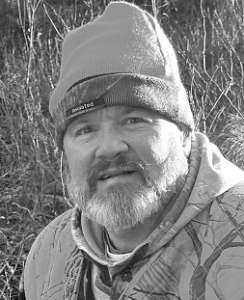 PALERMO – Daryn C. Dyer, 58, died unexpectedly Saturday, February 24, 2024, at Millinocket Regional Hospital. He was born on June 4, 1965, a son of David J. and Brenda J. (Hannan) Dyer.
PALERMO – Daryn C. Dyer, 58, died unexpectedly Saturday, February 24, 2024, at Millinocket Regional Hospital. He was born on June 4, 1965, a son of David J. and Brenda J. (Hannan) Dyer.
Daryn was a graduate of Erskine Academy, in South China, class of 1983.
He had been employed for over 40 years at JS McCarthy Printers, in Augusta, and will be sorely missed by the entire JSM family.
Daryn loved hunting, fishing and all things outdoorsy but his favorite thing was to spend time with his wife, children and grandchildren. He was an amazing Grampy or “Bampy”, a loving husband, and the best dad.
Daryn is survived by his wife of 37 years, Leslie A. (Tesseo) Dyer, of Palermo; three children, Tyler Dyer and his wife Felicia, Ethan Dyer and his wife Callie and Nikki Dyer; two brothers, Daniel Dyer and his wife Bethany, and Jamie Dyer and his wife Andrea; a sister, Kelly Kramer and her husband Eric; three grandchildren, Easton Dyer, Olivia Dyer and Marigold Dyer; as well as several nieces, nephews, aunts, uncles and cousins.
A gathering of family and friends was held on Sunday, March 3, at Plummer Funeral Home, Windsor Chapel, 983 Ridge Rd., Rt. 32, Windsor.
Condolences, stories and photos may be shared through the funeral home website at: www.plummerfh.com.
RICHARD A. STAPLES
PALERMO – Richard Adam Staples, 60, of Palermo and Thomaston, passed away on Friday, February 23, 2024, at MaineGeneral Medical Center, in Augusta. Richard was born March 27, 1963, the son of Warren Sr. and Thelma (Fuller) Staples.
Richard grew up in Palermo, attended Palermo Consolidated School, and Gardiner Area High School, and graduated from Erskine Academy, in South China. He worked many jobs, the last 20 years he was a caregiver to his nephew until he couldn’t do it anymore.
Richard was predeceased by his parents, his brothers Basil, Warren, and Joseph and his wife Sharon, his sisters Norma Staples and Louise Keane, brother-in-law, Andrew (Steve) O’Brien, and sister-in-law, Jean Staples.
Surviving are his daughter, Kayla Lilly and her two children, Dakota Carter and Brooke Doucette, of Old Town; his six brothers, Forrest, James “Red”, Rhama and Ephraim, of Palermo, Larry, of Thomaston, Henry and his wife Linda, of Caribou; three sisters, Grace O’Brien, of Palermo, Ann Bako and her husband Peter, of Weeks Mills, and Martha Staples and her companion Barry Swift, of Somerville; brother-in-law, Steve Keane, of Georgetown; sister-in-law, Glanis Staples, of Palermo; and several nieces, nephews, and cousins.
A celebration of his life will be held on June 22, at 3 p.m. at his home on the Colby Road, in Palermo.
Memories and condolences may be shared with the family at Directcremationofmaine.com
ANNA MARIE GERALD
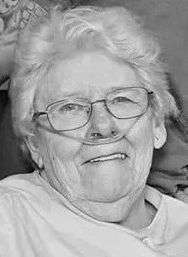 WINSLOW – Anna Marie Gerald passed away on the morning of Saturday, February 24, 2024, following a brief illness. She was born on September 9, 1940, the youngest of five children born to Donald R. and Carlene M. (Ellis) Finnemore, in Houlton.
WINSLOW – Anna Marie Gerald passed away on the morning of Saturday, February 24, 2024, following a brief illness. She was born on September 9, 1940, the youngest of five children born to Donald R. and Carlene M. (Ellis) Finnemore, in Houlton.
The family lived in Danforth and Hodgdon, before settling in Unity. She graduated from Unity High School, in 1958, as one of 12 students and went on to attend Pierce Secretarial School, in Boston, Masachusetts.
Stephen L. Gerald took Anna to be his wife of September 2, 1960, and she moved to Clinton. For 30 years they worked side by side at L.L. Gerald and Son, in Fairfield, and created a thriving business that served the community well. Together they retired and enjoyed their home (camp) on Unity Pond. Anna enjoyed ice fishing up to Moose Camp, in Lily Bay, snowmobiling, cards with friends and family, and entertaining at the lake. She was involved with the Clinton Evening Extension, Town and Country Trailriders snowmobile club, and the Jaycee Wives.
Anna was an accomplished cook, which aided Steve in getting his projects done. Their son, Scott, only had to put out the word that Anna was cooking an eye of the round, complete with fixings, and friends would come running. Before you knew it, a 10-yard loam pile was spread before the roast hit the table. Anna was amazed at how well Steve’s methods worked.
She quite often had plans and schemes for the camp, to which Steve would state, “that’s for you and your second husband to do.” Whether that was premonition or joking, the love of her life passed away in July 1994.
Anna was blessed again to find another love in Richard Beale. They never married but they spent the next 25 years pursuing a different life; one filled with traveling extensively, enjoying auto racing, retirement, and above all, time spent with family. Unfortunately, Richard passed in 2019. Though Anna sorely missed Richard, she was blessed to have a large “Bonus Family” which encompassed Richard’s six children.
Anna was predeceased by her parents, husband, Stephen, partner, Richard, and bonus son, Robert Mark Beale. She was the last remaining sibling, having lost brothers Donald E. Finnemore Sr. and Lewis Finnemore as well as sister, Loralie Higgins and Marjorie Drake.
She is survived by her only son, Scott L. Gerald and his wife Michelle, of Fairfield Center; her grandsons Blake L. Gerald and Alex S. Gerald; her great-grandsons Elliot and Jack Gerald; many nieces and nephews; and sister-in-law, Barbara Finnemore; her bonus family, William (Mike) Beale, Laura Hatfield, Richard (Rick) Beale, Mailissa (Lisa) Cavanaugh, Mary Dowe, and many grandchildren and great-grandchildren from clan Beale.
There will be an informal celebration of life with refreshments held Saturday March 23, 2024, at 1 p.m., in the Brown Memorial Methodist Church fellowship hall, 36 Church St., Clinton.
An interment service at Greenlawn Rest Cemetery, in Clinton, will be announced at a later date.
Please visit Anna’s memorial page at https://dsfuneral.com/obituaries/anna-gerald where condolences, photos, and special memories may be shared.
LORETTE LEIGH
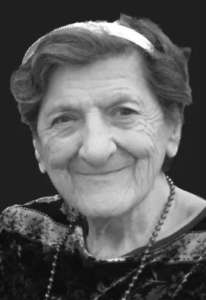 FAIRFIELD – Lorette Leigh, 83, of Fairfield, passed away on Monday, February 26, 2024, at Mount Joseph, in Waterville.
FAIRFIELD – Lorette Leigh, 83, of Fairfield, passed away on Monday, February 26, 2024, at Mount Joseph, in Waterville.
In 1974, Lorette married Robert Leigh. They were married for 35 years until Robert passed away in 2009.
Most of Lorette’s working days were spent at the Diamond Match Factory, in Oakland. In her retirement, she enjoyed many hours of talking on her CB radio with her friends and was known to many as “Chipper Girl.” Lorette was also a member of the Benton Grange, where she made many more longtime friends.
She is survived by her two stepchildren, Randy Leigh and his wife Ruth, of Fairfield, and Wendy Yor,k of Washington; three grandchildren, Jenny Boyden and her husband Matthew, of Clinton, Tracy Jacques and her husband Joe, of Waterville, Lacey Leigh and her partner Nicholas Philbrook, of Matinicus Island; three great-grandchildren, Storer and Jillian Boyden, both of Clinton, and Eli Philbrook of Matinicus Island.
A private family spring burial beside her husband will take place at the Maplewood Cemetery in Fairfield.
Arrangements are in the care of Lawry Brothers Funeral Home, 107 Main St., Fairfield, where memories may be shared, and an online register book signed by visiting http://www.lawrybrothers.com.
SUSAN H. BOUTHOT
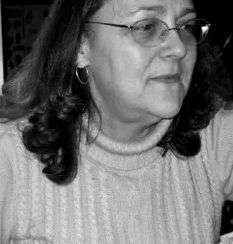 OAKLAND – Susan Helen (Patrick) Bouthot 71, passed away on Monday February 26, 2024, at MaineGeneral Medical Center, in Augusta, following a long seven-year courageous and hard-fought battle with ovarian cancer. She was born in Greenville on February 18, 1953, the daughter of Charles and Theresa Patrick.
OAKLAND – Susan Helen (Patrick) Bouthot 71, passed away on Monday February 26, 2024, at MaineGeneral Medical Center, in Augusta, following a long seven-year courageous and hard-fought battle with ovarian cancer. She was born in Greenville on February 18, 1953, the daughter of Charles and Theresa Patrick.
Sue attended schools in Waterville. Sacred Heart School for eight years and Waterville High School where she graduated in 1971. Susan and Arthur were married at the Sacred Heart Church, in Waterville, on July 1, 1972, and lived in Oakland since 1978.
Sue was primarily a home maker, and full-time mom but did work at C. F. Hathaway Shirt Factory and The Curtain Shop, both in Waterville when the children were older. She earned an associate degree in Mental Health and Human Services from the University of Maine at Augusta in 2004. She liked to knit and crochet and was very good at her craft.
She is survived by husband of 52 years, Arthur Bouthot; son Robert Bouthot and wife Andrea, and daughter Jasmine McEachern and husband Dan; three grandchildren, Arianna McEachern, Levi Bouthot and Evan Bouthot; sisters, Lynn Burke, from San Antonio, Texas, Donna Wescott and husband Kyle, from Sidney; and brother, Alan Patrick and wife Sookie, from Massachusetts; along with several nieces and nephews. She very much-admired Melissa and Casey Wescott whom she babysat for several years. She wasn’t just an Aunt, she was a special “Tante”.
There will be no visiting or public viewing hours. Funeral Mass will be held at St. John Church, in Winslow, at 10 a.m., on Friday, March 15, followed by a funeral luncheon at St. John cafeteria. Interment at the VA Mount Vernon Road Cemetery, in Augusta, will be scheduled at a later date in the spring.
Arrangements are in the care of Wheeler Funeral Home, 26 Church St., Oakland where memories may be shared, and an online register book signed by visiting http://www.lawrybrothers.com.
DARRELL L. CROMMETT
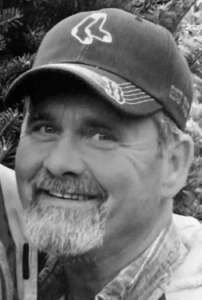 VASSALBORO – Darrell Lee Crommett, 65, passed away peacefully at MaineGeneral Medical Center, in Augusta, on Tuesday, February 27, 2024, following a long battle with dementia. He was born May 29, 1958, a son of Theda (Tompkins) and Leslie Crommett Sr.
VASSALBORO – Darrell Lee Crommett, 65, passed away peacefully at MaineGeneral Medical Center, in Augusta, on Tuesday, February 27, 2024, following a long battle with dementia. He was born May 29, 1958, a son of Theda (Tompkins) and Leslie Crommett Sr.
Darrell grew up in Weeks Mills and was one of 14 brothers and sisters. He graduated from Erskine Academy, in South China, in 1977. In 1979 he welcomed his only son, Derek, with then wife, Karen Perry. He retired in 2018 after over 25 years of service as a dedicated delivery driver for Suburban Propane.
Darrell was full of life and lived it to the fullest. He enjoyed playing softball for most of his adult life in various leagues, and especially loved playing alongside his son.
On warm summer days Darrell could be found cruising on his Harley, whether it be a quick trip to the store or a long-distance ride. He spent a lot of time “working” around his property with his Kubota tractor. He loved the outdoors and spent a lot of time snowmobiling or four-wheeling with family and friends. He enjoyed hauling his camper to various locations, especially down to the Fryeburg Fair.
Darrell enjoyed trips up north to his nephew, Shane’s hunting lodge, as well as trips to a camp he built and owned in Springfield for many years. He loved hunting and ice fishing. He could often be found in his ice shack on Three Mile Pond and was most happy to spend a day fishing with his grandson, Liam. He enjoyed his property on the lake, in Vassalboro, and held many fond memories of the neighbors who he considered family.
He loved spending time with his grandchildren and would light up when they would come to visit Grampy. His granddaughter Aly gave him a run for his money and was affectionally called his “little pistol”.
Darrell was predeceased by his parents; and his siblings, Leslie Crommett Jr., Myrtie Nowlan, Joanne Shorey, Mary Davis, and Herbie Crommett.
He is survived by his son Derek Crommett, his wife Amanda and their two children Liam and Aly; siblings Clayton Crommett, Vincent Crommett, Grace Davis, Barbara Mayberry, Vicki McPhee, Dianne Demerchant, Beverly Smith and Mariette Field; his life-long best friend, Ed Haskell; several nieces, nephews, and in-laws.
Visiting hours will be held at Plummer Funeral Home, 16 Pleasant St., Augusta, on Saturday, March 9, from 2 to 4 p.m. A Celebration of Life for family and friends will be held this summer.
In lieu of flowers, memorial contributions may be made to the charity of your choice.
DORIS B. DAVIDSON
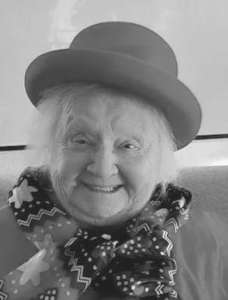 FAIRFIELD – Doris B. Davidson, 94, passed away peacefully at Mount Joseph, in Waterville, on Monday, January 15, 2024. Doris was born in her family home, in Waterville, on November 12, 1929, the daughter of Wilfred and Corinne Boucher.
FAIRFIELD – Doris B. Davidson, 94, passed away peacefully at Mount Joseph, in Waterville, on Monday, January 15, 2024. Doris was born in her family home, in Waterville, on November 12, 1929, the daughter of Wilfred and Corinne Boucher.
She met the love of her life, Robert, and together they raised their daughter, Debra.
Doris enjoyed spending time with her family. She especially loved listening to her grandson read to her when he was little. She was active in her church and enjoyed the company of her friends.
Doris was predeceased by husband, Robert N. Davidson; and her daughter, Debra A. Chessa.
She is survived by her grandson, Anthony Chessa; son-in-law, John Chessa; and sister, Jeannine Roy.
A funeral Mass will take place at Notre Dame Catholic Church, in Waterville, with interment following at the Maine Veterans Cemetery, in Augusta, later this summer.
RITA BOWMAN
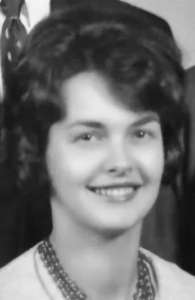 BENTON – Rita Bowman, 80, passed away on Wednesday, January 31, 2024, following a long battle with Vascular Dementia and Alzheimer’s. She was born October 11, 1943, in Brunswick, to her parents Mildred (Gerald) and Delbert Crosby.
BENTON – Rita Bowman, 80, passed away on Wednesday, January 31, 2024, following a long battle with Vascular Dementia and Alzheimer’s. She was born October 11, 1943, in Brunswick, to her parents Mildred (Gerald) and Delbert Crosby.
Shortly after, they moved to the 200-acre dairy farm, in Benton, that she grew up on and where her parents lived out their lives. Her love of animals in all forms was born on her family’s farm. She was active in the 4H and a true farm girl. She spent her childhood exploring the farm on the back of her first horse, a Paint named Beauty.
She graduated from Lawrence High School, in Fairfield, in 1961. She was the salutatorian of her class. She attended college for one year in hopes of becoming a teacher. But, it wasn’t meant to be, life had other plans for her. While back home on the farm, Rita met her first husband, David West. They were married in 1963 and soon after they purchased their own 100-acre farm on the same road as her parents where she lived for the next 48 years.
She filled her barn with countless animals of every shape and form who she lovingly cared for. Her house was oftentimes overflowing with her beloved cats and dogs over the years.
Gardening was also a love of hers. She always had a huge vegetable garden that she would soon lose the battle of the weeds. But not before she managed to can and freeze for her family and sell the extra on the roadside. Her flower gardens also brought her great joy. Year after year she planted her dahlias, cannas, and gladiolus bulbs in the spring and enjoyed them all summer.
Rita was also sometimes known to kick up her heels on a Saturday night with David and their friends at the local dance halls of the day.
They were also proprietors of a store in Benton for a time called West’s Variety. It was not her dream and when the store was sold she did not shed a tear.
While owning the store, Rita attended the reserve police officer academy with David and that propelled her into the next chapter of her life. She worked as a reserve officer for Winslow Police Department for many years and started her 26 years as a security officer along with a few other jobs at Colby College, in Waterville.
She met her second husband, James Bowman, at her 25th class reunion, who she remained married to until his passing in December 2022.
Rita’s passion in life was her love of horses. She had a lifelong love affair with them. She enjoyed taking her grandchildren to riding lessons and horse shows. This brought her great joy in her life. She passed this love on to some of her grandchildren and great-grandchildren.
Rita was predeceased by her parents; husband; brother Ronald, sister, Diane; and her grandson, Owen Hotham.
She is survived by her daughters, Donna and Jay Young, Deborah and Sean Ford; son, Jody West; stepson Ben Bowman; and brother, Roger and Sharon Crosby; grandchildren, Alli Hotham, Quentin Hood, Amanda Gheorghe, Adam West, Peter Bryant, Bianca and Beorn Brueckner, and Tuesday and Torin Ford; great-grandchildren, Hailie and River Hotham, Carter Grenier, Lincoln Rideout, and Daxton and Ryker Bryant; nieces Tammy Crosby and Bonnie Crosby Dersham who spent most weekends, school vacations, and summers with her; her former daughter-in-law of many years, Amy Doody; her granddaughter-in-law, Ashley Ferris; her ex-husband, David West.
There will be no service per Rita’s request. Memories and condolences may be shared with the family at Directcremationofmaine.com.
Anyone wishing to honor her can make a donation to Charley’s Strays, in Clinton.
 by Melinda Myers
by Melinda Myers
















 China Town Clerk Angela Nelson reported the following results from Tuesday’s primary election.
China Town Clerk Angela Nelson reported the following results from Tuesday’s primary election.
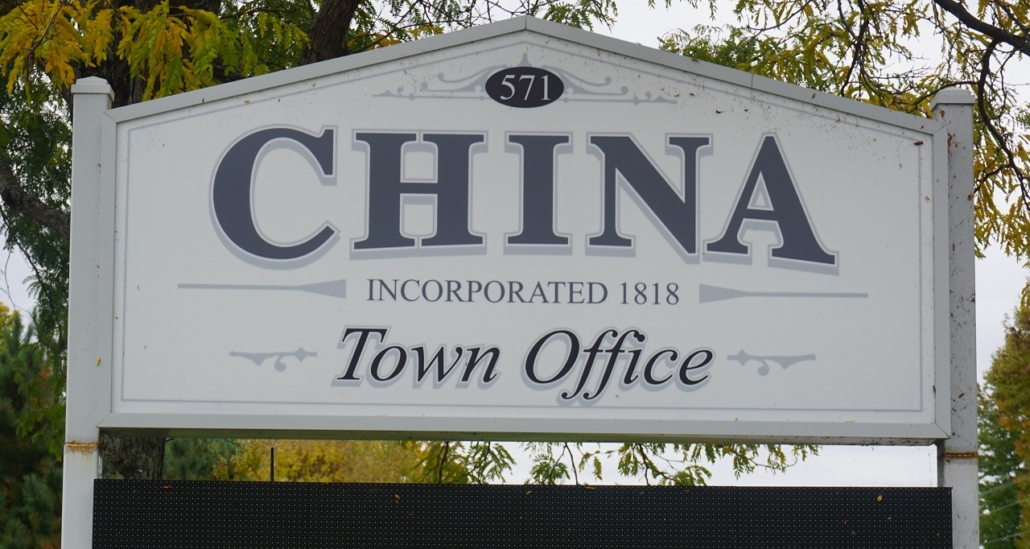
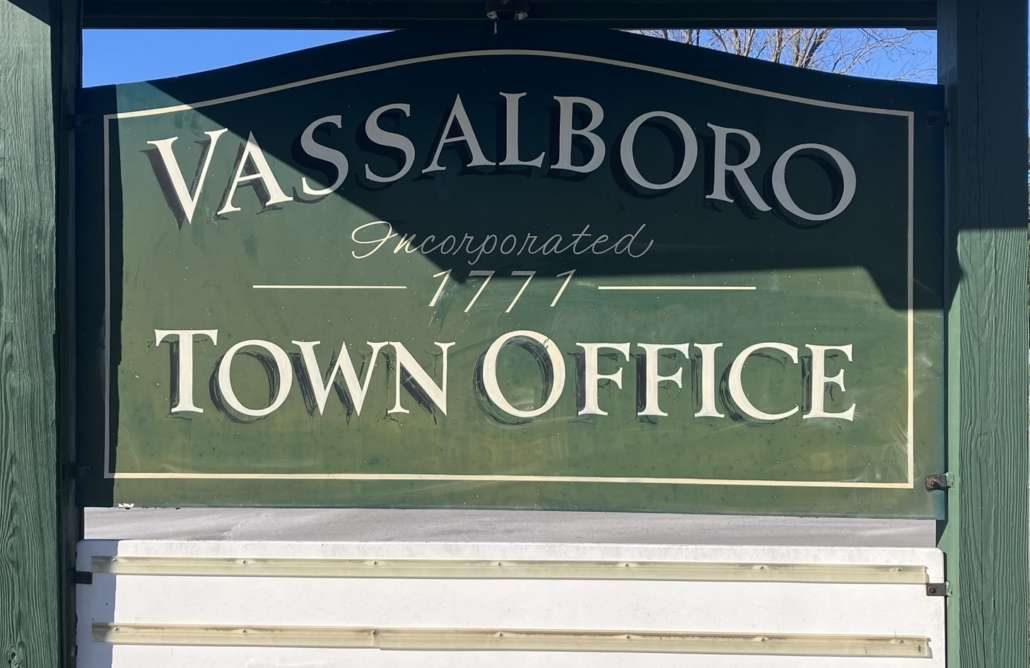

 by The Town Line staff
by The Town Line staff